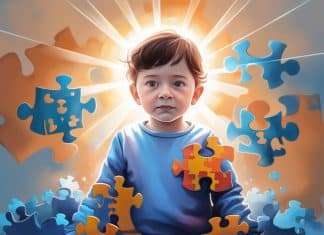Introduction
Ever wondered how some individuals with Down Syndrome also show traits of autism? It’s a unique overlap that sparks curiosity and calls for deeper understanding. Let’s dive into this fascinating topic to explore what it means and how it impacts individuals and their families.
What is Down Syndrome?
Genetic Basis of Down Syndrome
Down Syndrome is a genetic condition caused by an extra copy of chromosome 21. This additional genetic material affects development, resulting in distinct physical traits and intellectual challenges.
Common Physical and Cognitive Characteristics
Individuals with Down Syndrome often share common features such as almond-shaped eyes, a flatter facial profile, and a short stature. Cognitive delays and learning difficulties are also part of the condition, but the degree varies widely.
What is Autism?
Autism Spectrum Disorder: An Overview
Autism is a neurodevelopmental condition characterized by challenges in communication, social interaction, and repetitive behaviors. It exists on a spectrum, meaning its expression can range from mild to severe.
Behavioral and Cognitive Features of Autism
People with autism may struggle with understanding social cues, maintaining eye contact, or adapting to changes in routine. Sensory sensitivities are another hallmark feature, making everyday environments overwhelming for some.
The Intersection of Down Syndrome and Autism
Why Do Autism Traits Appear in Down Syndrome Individuals?
While Down Syndrome and autism are distinct conditions, some individuals can have both. The reasons are not fully understood, but overlapping genetic and neurological factors may play a role.
Key Similarities Between the Two Conditions
Both conditions can involve developmental delays, social communication challenges, and behavioral issues, making it tricky to differentiate at times.

Identifying Autism Traits in Down Syndrome Individuals
Behavioral Signs to Watch For
Keep an eye out for repetitive behaviors, extreme sensitivity to changes in routine, or intense focus on specific interests. These may indicate autism traits.
Communication Challenges
Difficulty with verbal and non-verbal communication is a common sign. This can include delayed speech or an unusual tone of voice.
Social Interaction Patterns
Struggles with forming connections, understanding emotions, or playing cooperatively with others are often observed in individuals showing traits of both conditions.
Diagnostic Challenges
Overlapping Symptoms
The overlapping characteristics of autism and Down Syndrome can make diagnosis tricky. For instance, both conditions may involve delayed speech or difficulty with social skills.
Misdiagnosis or Late Diagnosis
It’s not uncommon for autism to be diagnosed late or even missed in individuals with Down Syndrome because some traits are attributed solely to the latter.
Effective Strategies for Parents and Caregivers
Building a Supportive Environment
Creating a safe, predictable, and nurturing space at home can significantly impact the child’s development. Visual schedules and clear routines help provide structure.
Early Intervention and Therapies
Speech therapy, occupational therapy, and behavioral interventions tailored to the child’s needs can improve communication and coping skills.
Individualized Education Plans (IEPs)
IEPs are crucial for addressing specific learning needs. Collaborate with educators to create a plan that aligns with the child’s strengths and challenges.
Resources and Support Networks
Organizations and Online Communities
Many organizations, like the National Down Syndrome Society or Autism Speaks, offer valuable resources. Online communities can also provide emotional support and practical advice.
Professional Support for Families
Accessing support from therapists, counselors, and medical professionals can help families navigate the challenges effectively.
Conclusion
Understanding autism traits in Down Syndrome individuals is key to supporting their unique needs. While challenges exist, so do opportunities for growth, learning, and connection. With the right resources, strategies, and a supportive network, these individuals can thrive in their own remarkable ways.
FAQs
1. Can a person have both Down Syndrome and autism?
Yes, it’s possible for someone to have both conditions, though it’s relatively rare.
2. What are the common autism traits in Down Syndrome individuals?
Traits include repetitive behaviors, communication challenges, and difficulty with social interactions.
3. How can parents support a child with both conditions?
Parents can create structured environments, seek early interventions, and use tailored educational plans.
4. Are there specific therapies for individuals with both conditions?
Speech, occupational, and behavioral therapies are often effective when customized to the child’s needs.
5. Where can families find support?
Families can access resources through organizations like Autism Speaks or the National Down Syndrome Society and join online communities for shared experiences.


























